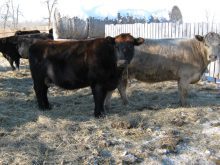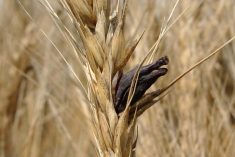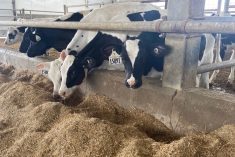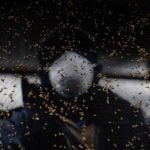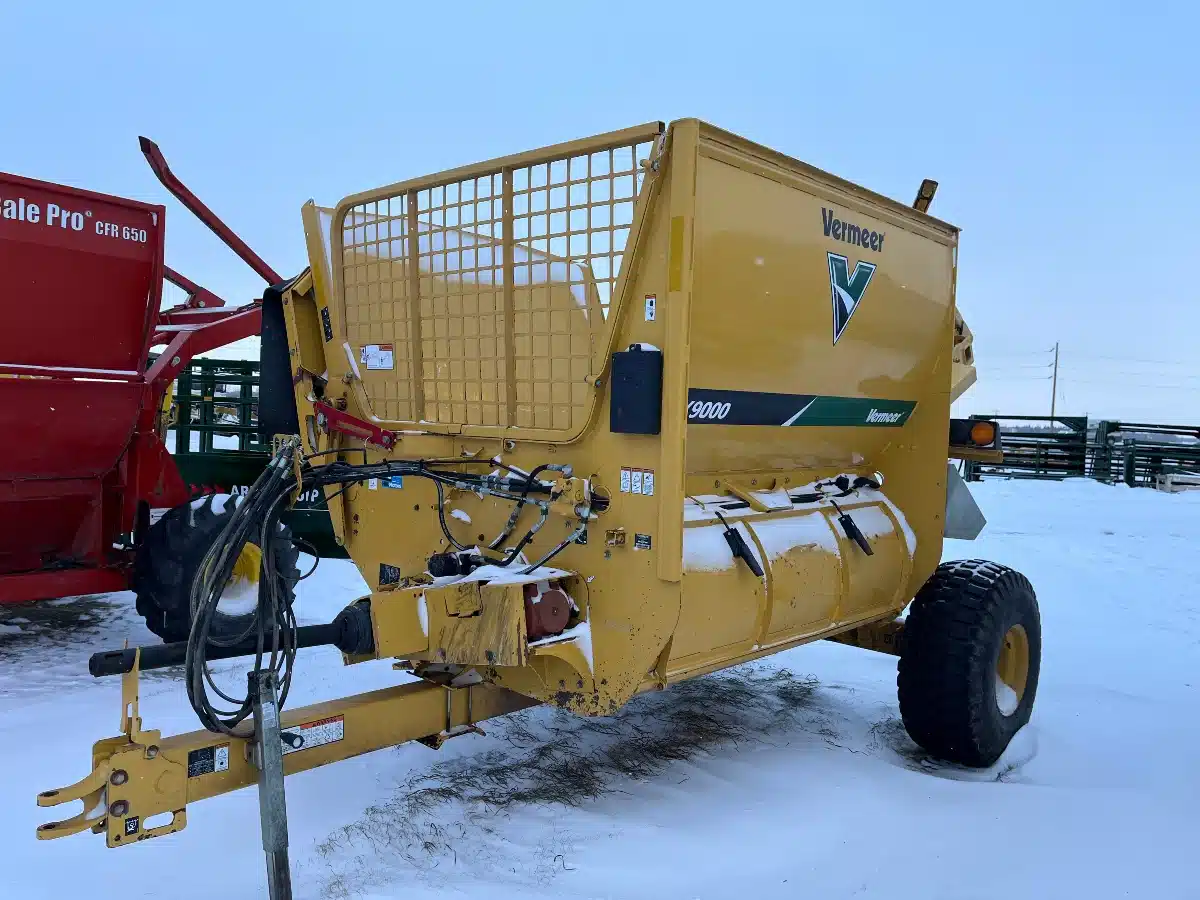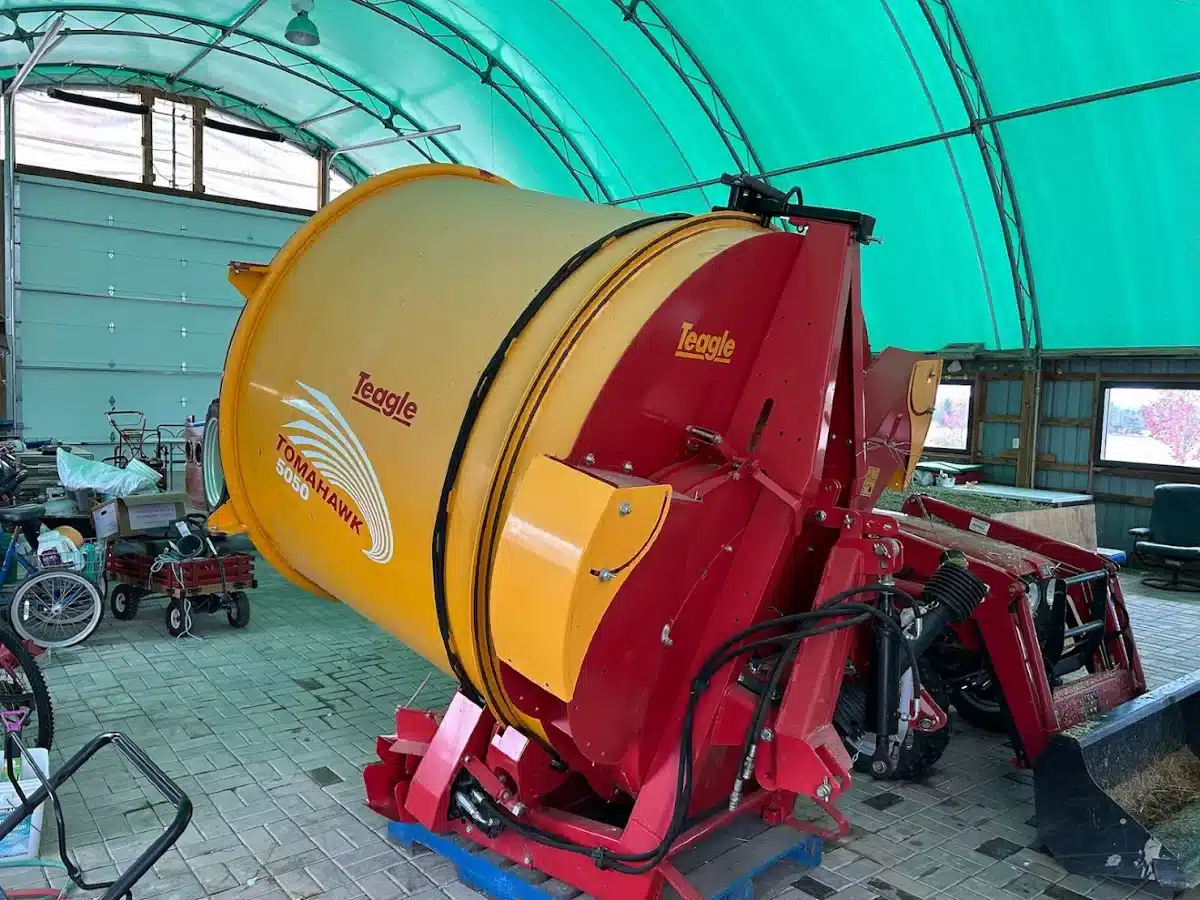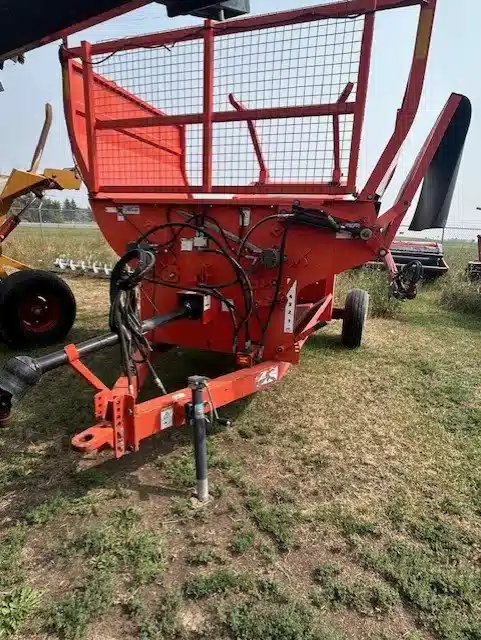Jonathan Karsin figures a Hustler bale unroller has easily paid for itself by more efficient use of hay.
Karsin is one of the principals of Karsin Farms Simmentals at Newton, about 20 km southeast of Portage la Prairie, Man. He says they have been able to save at least one large round bale per head over the winter. The farm runs about 40 head of purebred red and black Simmentals.
“And when hay is in that $100 to $150 per bale range, that can add up,” says Jonathan, who farms with his parents David and Pauline.
Read Also

Claas brings 1000 Series SP forage harvesters to Canada
In mid-August, Claas unveiled its new line of Jaguar forage harvesters at an event in Visalia, California, deep in the heart of that state’s dairy region.
The Karsins, who have been farming for about 15 years, first used round bale feeders. “The cattle would pull a lot of hay out of the feeder, then they would lay on it, and with manure on top a lot of it would be wasted,” says Karsin.
“We liked the features of Hustler bale unroller and switched to it a few years ago. It is a much more efficient way to feed hay and is also very versatile.” They’ve used the bale processor to spread straw and for feeding corn silage.
Their Hustler LX105 single bale unroller mounts on the front of their Kubota track loader. It’s powered by hydraulics, so a high-horsepower tractor isn’t needed to operate it.
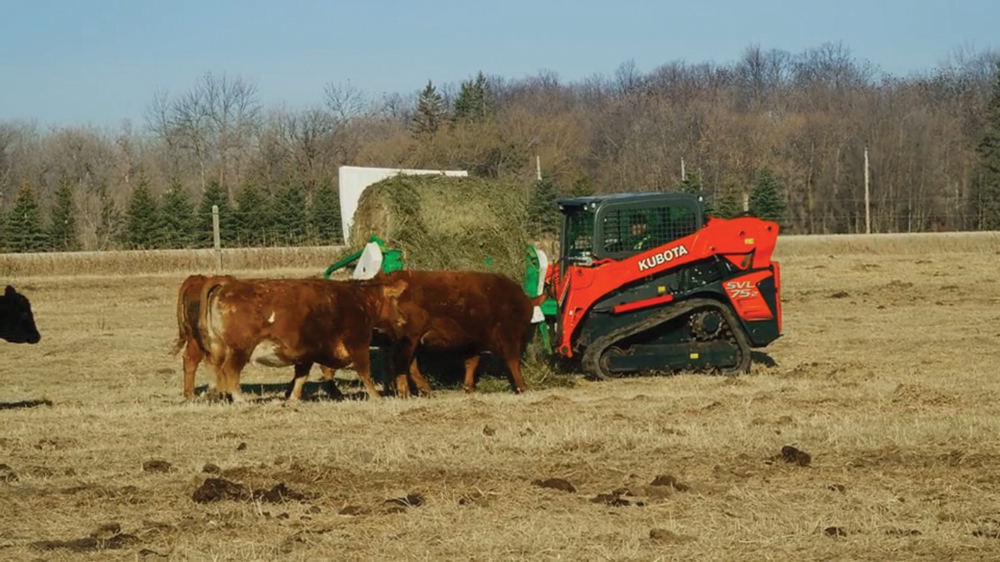
New Zealand imports
The chainless bale processor was first developed at Hustler Equipment headquarters in New Zealand about 30 years ago, says Lance Paskewitz, business development manager for Hustler North American operations, based in Minnesota. “But it began to trickle into North America about a dozen years ago.”
He says the machines now have wide distribution across Canada and the U.S. as well as other parts of the world.
With a wide range of models and capacity — from single to double bale feeders and large-capacity units that can carry six to eight bales at once — Paskewitz says there are models that work well from the smallest to the largest feeding operation.
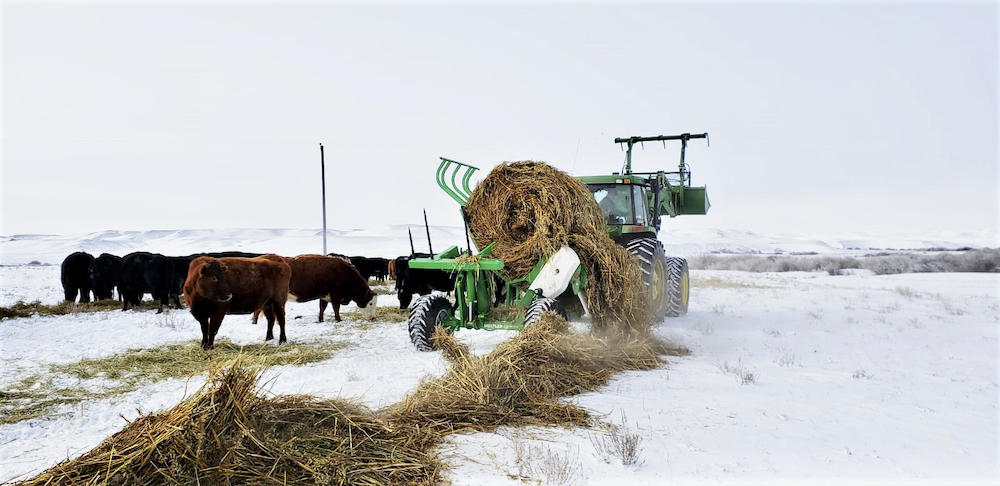
He says the relatively gentle handling of forage one of the key design features that appeals to many producers.
“Producers work all summer to produce good-quality hay. Many are paying attention to proper timing and dew point levels to ensure that hay as much leafy green material as possible. And then if that hay is put through a flail-type bale processor, all that management effort may be lost as the chains knock the leaves off the stem.”
Paskewitz says the processor may be as close as possible to unrolling or “to using a pitch fork,” as its rollers pull the bale apart.
“Once the bale is loaded into the machine, it rests up against two variable-speed rollers. For every turn the bottom roller makes, the top roller goes around three times. That top roller sort of fluffs the hay as it is dropped on the ground in a narrow windrow or into a feed bunk.”
That was the feature that really appealed to Karsin Farms — the bale is pulled apart and dropped in a narrow windrow. “With that narrow feed row the cattle are less likely to use it for bedding,” says Karsin. “And with more leaves on the hay they are getting greater feed value.”
Benefits
Karsin says he’s found several benefits:
- They went from feeding more than eight bales per animal per year to about 7-7.1, an appreciable 12 per cent savings or more.
- The cattle don’t trample or lay in the hay, as the windrow is not large enough to be appealing.
- All the animals have easy access to the feed.
- The soil is not compacted, as you can choose to feed in a new place every day.
- Manure is spread over alarge area.
- The fluffed hay is more palatable and easier to eat for the young calves and the older animals you’ve decided not to cull yet .
“We all work off farm, but we are also all involved with the cattle and farming when we are home,” says Karsin. “One of the other nice features of the Hustler bale processor is that it is easy to use. My mom often has to look after the feeding if dad and I are both away at the same time. She is not necessarily a mechanical person, but it is very easy to load the hay and attach the processor to the track loader on her own.”
Karsin says they have found the processor requires very little maintenance other than keeping it greased.
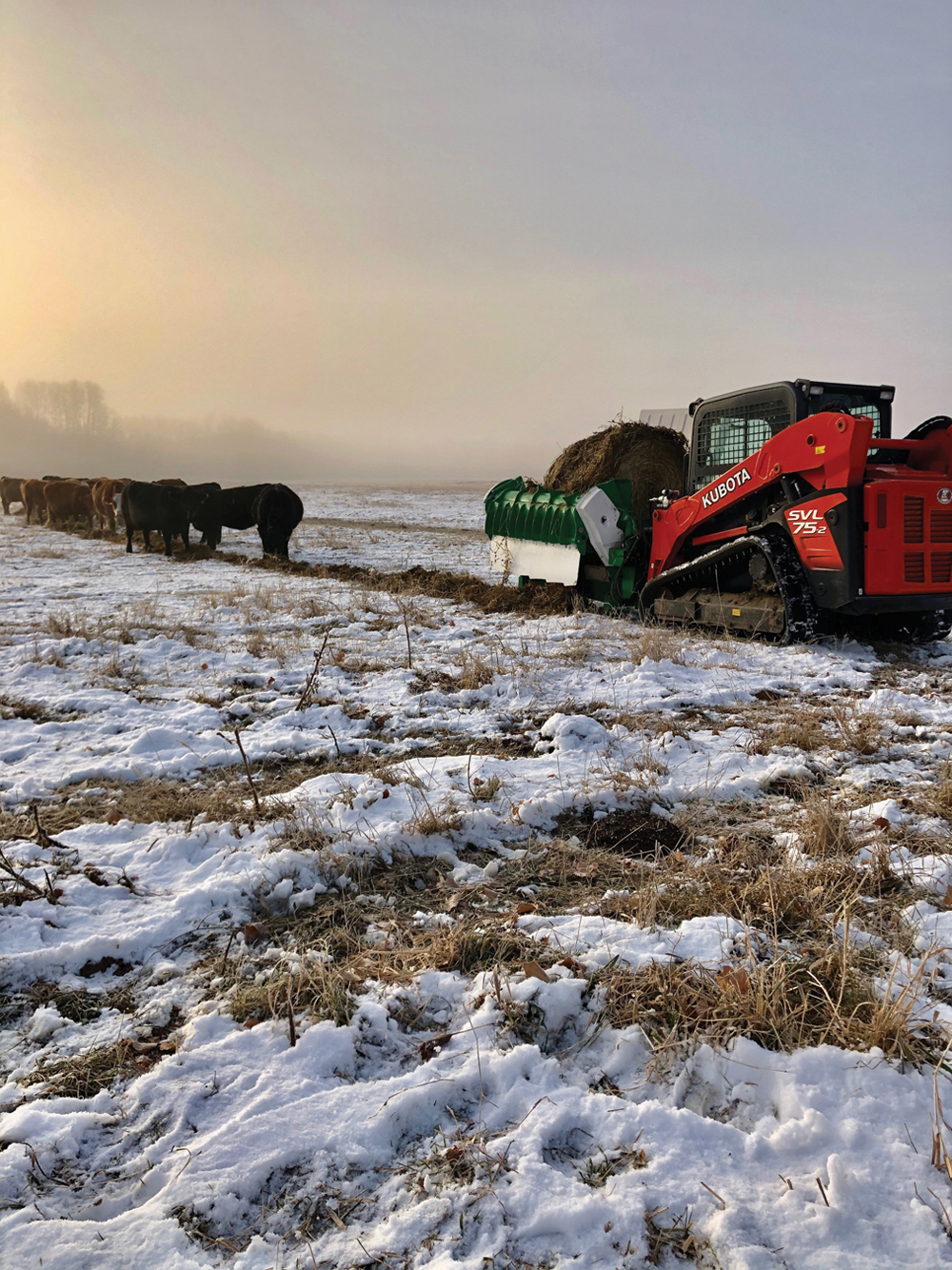
Less waste
The value of more gentle handling of hay to protect feed value is supported by a University of Alberta research project conducted several years ago. It compared the winter feed waste of cows fed forage on snow using a three-point bale unroller versus a flail-type bale processor (these use knives or flails to crush and chop the hay). The results showed that waste was significantly higher with the flail-type bale processor (12.9 per cent versus 19.2 per cent with the flail-type processor).
Also, 21.5 per cent of the total protein was found in the wasted feed delivered by the flail-type bale processor. To replace the lost protein, an additional 2.55 kg/5.61 lb of DM or 3.04 kg/6.69 lb of hay as fed per head per day is required, which increases feed costs by $0.60/h/d based on a hay cost of $0.09/lb. (Hay prices have been updated to reflect the current 2023 estimate).
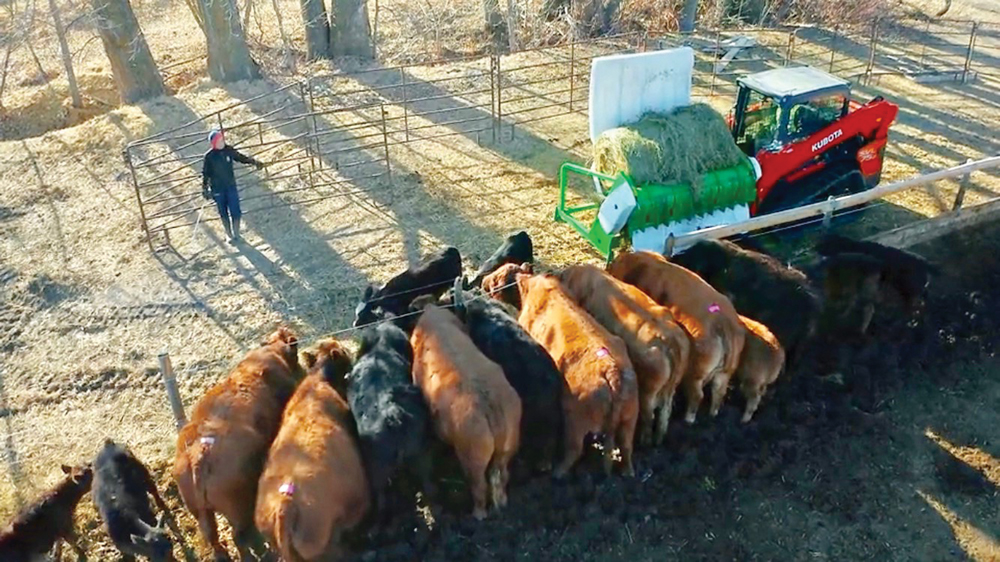
In total, the use of a flail-type bale processor increased winter feeding costs by $4.05 per head for a 175-day feeding period compared to a bale unroller when including wastage, nutrient replacement and additional equipment costs (including feed delivery costs, time of travel to and from the feeding area, processing time and total equipment time to feed the animals).
For instance, the study found that the total cost to operate the tractor and bale shredder machinery for 175 days was $15,973.24 or $91.27 per day or $0.91/h/d. The investment cost for flail-type bale processors is also more expensive than investing in an unroller or a processor such as the Hustler Chainless bale feeder. For more information on the Hustler Equipment line and their Canadian dealers, visit their website at: hustlerequipment.com/ca.





